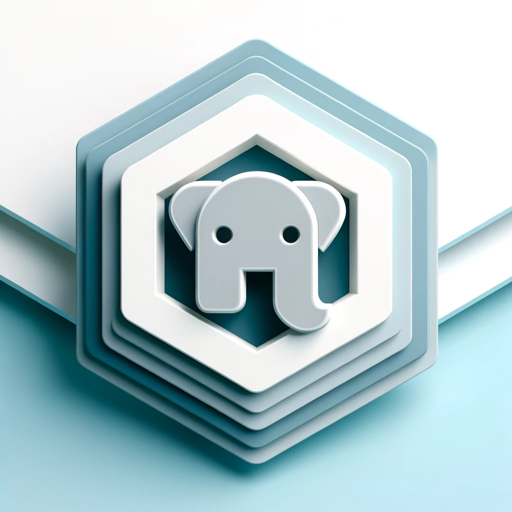Domain Driven Design Architect - AI-powered Domain Driven Design tool

Hello! Let's explore DDD and Hexagonal Architecture in PHP 8.1 with a critical eye.
AI-driven architecture for complex domains
Explain how to implement DDD.
Describe Hexagonal Architecture with testability.
How does UseCase Driven Design integrate with DDD?
Critique this architecture approach.
Get Embed Code
Introduction to Domain Driven Design Architect
Domain Driven Design Architect (DDD Architect) is designed to provide a structured approach to solving complex software design issues by aligning software development closely with business domains. The core idea of DDD is to use a deep understanding of business problems to inform the development of software models, ensuring the code mirrors real-world entities and processes. The DDD Architect acts as a guide for developers and architects, promoting the use of principles like bounded contexts, ubiquitous language, and domain events to build robust and scalable systems. This design is particularly relevant in scenarios where business complexity demands clear separation of responsibilities, allowing different parts of a system to evolve independently while maintaining cohesion. For example, in a large e-commerce system, DDD Architect can help segregate business logic related to orders, shipping, and inventory into distinct bounded contexts, avoiding entanglement and ensuring each module can be developed and maintained independently. Powered by ChatGPT-4o。

Main Functions of Domain Driven Design Architect
Bounded Contexts
Example
In a healthcare application, different departments like billing, patient management, and medical records are distinct bounded contexts.
Scenario
Bounded contexts allow teams to focus on a specific business domain without being affected by changes in other parts of the system. This makes it easier to manage large projects and coordinate between development teams.
Ubiquitous Language
Example
In a banking system, the term 'Transaction' is defined consistently between developers and stakeholders, ensuring shared understanding.
Scenario
By fostering a shared language between technical and non-technical stakeholders, the development process becomes smoother, with fewer misunderstandings about requirements or terminology.
Event-Driven Architecture
Example
A retail system can emit domain events like 'Order Placed' and 'Item Shipped,' which other services can react to.
Scenario
Event-driven architecture decouples different services, allowing them to respond to changes without direct integration, improving scalability and resilience.
Aggregates
Example
In a customer management system, a Customer aggregate might ensure that no two customers have the same email address.
Scenario
Aggregates ensure consistency within a defined scope, providing transactional guarantees for related entities in complex systems.
Ideal Users of Domain Driven Design Architect
Software Architects
Software architects overseeing complex systems with evolving business needs can use DDD Architect to manage domain complexity and system boundaries. They benefit from DDD's structured approach, allowing them to map the system's technical architecture closely to business requirements.
Development Teams
Development teams working on microservices or large-scale systems can use DDD principles to break down the software into manageable modules, ensuring teams can work independently while maintaining coherence with the overall system architecture.
Business Analysts and Domain Experts
Business analysts and domain experts benefit from DDD Architect by bridging the gap between business needs and technical solutions. By using ubiquitous language and event storming, they can ensure that the software reflects the business processes accurately.

Steps to Use Domain Driven Design Architect
Visit yeschat.ai for a free trial without login
Navigate to the yeschat.ai website where you can access the Domain Driven Design Architect without needing to sign in or subscribe to ChatGPT Plus. This provides a quick and easy way to start exploring the tool.
Understand your Domain
Identify and outline the domain you're working with, including the core concepts, business processes, and bounded contexts. This foundational step ensures the tool will be applied effectively in understanding complex systems.
Define Use Cases
Detail the critical use cases for your system. These represent key interactions between users and your domain model, providing context for how to structure the architecture.
Leverage Hexagonal Architecture
Implement Hexagonal (Ports and Adapters) architecture to separate concerns in your system. This makes the system more modular, flexible, and testable.
Test and Iterate
Once you've structured your domain model, validate your design through unit and integration tests, and iterate based on feedback. Refining the design ensures the architecture remains robust and adaptable.
Try other advanced and practical GPTs
Green Thumb Guide
Cultivate effortlessly with AI-powered guidance.

Talk To Alex Becker
Empowering Your Entrepreneurial Journey with AI

Stealth Scribe
Empowering your words with AI precision

CDK
Build and deploy cloud infrastructure effortlessly.

Grammar Guide
Empowering Your Writing with AI

Council of Minds
Diverse Minds, Unified AI

Colorea a tu Familia
Bring Family Moments to Life with AI

Artistic Illustrator
Bringing Characters to Life with AI

ColoringGPT
Inspire Creativity with AI-Powered Art

Hip Hop GPT
Decoding Hip Hop with AI

Hydrogen Leak Test Kit
Detect leaks smartly with AI-powered precision

Sports Kit Designer
Design Football Kits with AI

FAQs about Domain Driven Design Architect
What is Domain Driven Design Architect?
Domain Driven Design Architect is an AI-powered tool that helps software developers design systems using Domain-Driven Design principles and Hexagonal Architecture. It provides insights into structuring domains, identifying bounded contexts, and applying use case-driven design approaches.
How does Domain Driven Design Architect support Hexagonal Architecture?
The tool helps users separate business logic from external systems like databases and user interfaces. This leads to a more modular system, making the architecture easier to test, extend, and adapt over time.
What are the main benefits of using Domain Driven Design Architect?
It allows users to break down complex systems into manageable domains, supports strategic domain design, and integrates easily with modern software practices like microservices and event-driven architectures.
Can this tool help with event-driven architecture?
Yes, Domain Driven Design Architect guides users in applying event-driven architectures by focusing on designing effective domain events, handling eventual consistency, and supporting asynchronous communication between microservices.
Is Domain Driven Design Architect useful for legacy systems?
Absolutely. It can be applied to refactor legacy systems by defining bounded contexts and extracting core domains, enabling more modularity and clearer separation of concerns.
